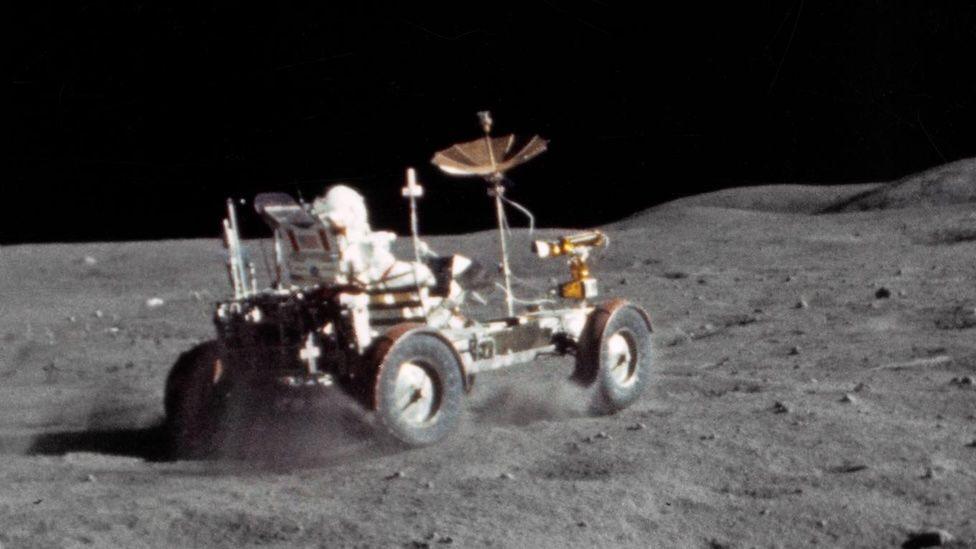Nasa Apollo missions: Stories of the last Moon men
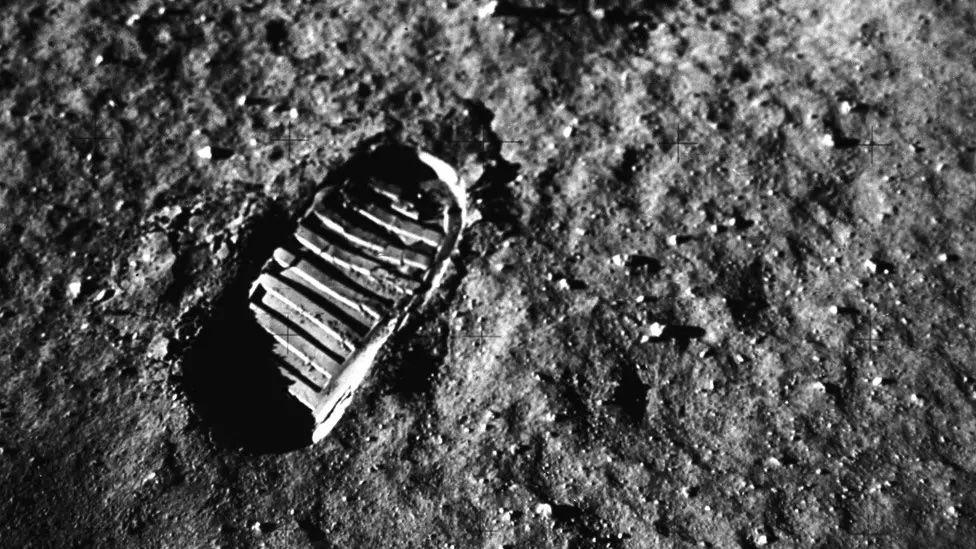
Who will be the next human to leave their footprint on the surface of the Moon?
- Published
They were the pioneers of space exploration - the 24 Nasa astronauts who travelled to the Moon in the Apollo missions of the 1960s and 1970s.
The death of Apollo 13 commander Jim Lovell, who guided the stricken mission safely back to Earth in 1970, means there are now just five people remaining who have escaped the relative safety of Earth orbit and ventured deeper into space.
More than 50 years since a human last set foot on the Moon, the race to put people back on the lunar surface is heating up once again.
Nasa hopes its Artemis programme will lead to astronauts living on the Moon this decade. China is also aiming to have people on the lunar surface by 2030, having landed a probe on the far side of the Moon in June 2024.
A number of private companies have tried to send scientific craft to the Moon, although the mishaps have outnumbered the successes.
Nasa had intended to launch Artemis 2, its first crewed lunar expedition since Apollo 17 in 1972, last year but that date has slipped into 2026, as the space agency says it needs more time to prepare.
Meanwhile, companies such as SpaceX and Boeing continue to develop their own technology, although not without their setbacks.
The issues with Boeing's Starliner which left two astronauts stranded on the International Space Station were embarrassing for the aerospace giant, while the "rapid unscheduled disassemblies" of SpaceX's Starship have become a customary sight to space watchers.
These delays highlight the sad fact that the number of remaining Apollo astronauts is dwindling.
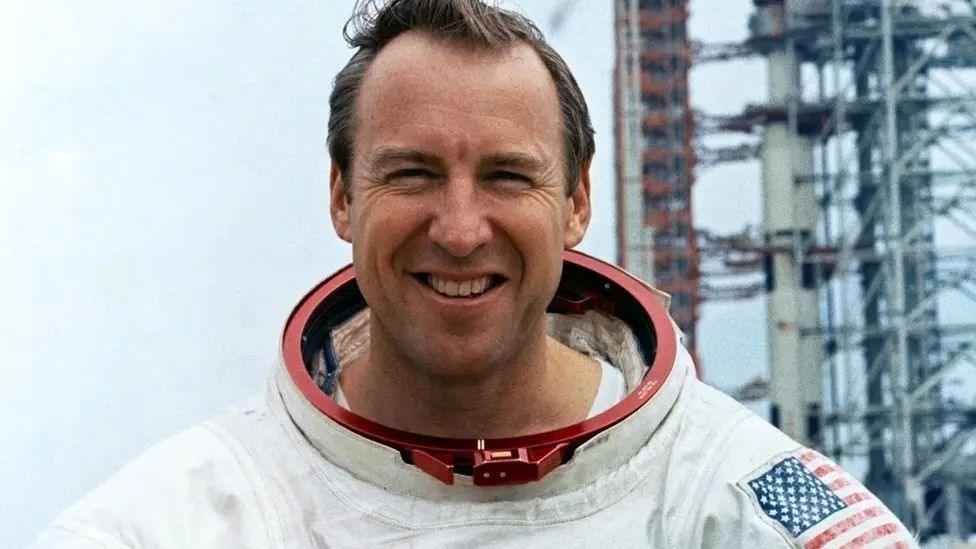
Apollo 13 was Jim Lovell's final mission
Along with Frank Borman and Bill Anders, Jim Lovell made history when the three undertook the first lunar mission on Apollo 8, testing the Command/Service Module and its life support systems in preparation for the later Apollo 11 landing.
Their craft actually made 10 orbits of the Moon before returning home. Lovell was later supposed be the fifth human to walk on the lunar surface as commander of Apollo 13 - but of course, that never happened.
Instead the story of his brush with death was immortalised in the film Apollo 13, in which he was played by Tom Hanks.
Watch: Moment Jim Lovell told earth "Houston, we've had a problem" as Apollo 13 suffered a fault
Following his retirement from Nasa in 1973, Lovell worked in the telecoms industry. Marilyn, his wife of more than 60 years, who became a focus for the media during the infamous incident, died in August 2023.
But what of the remaining five Moon men?
Who are they, and what are their stories?
Buzz Aldrin (Apollo 11)
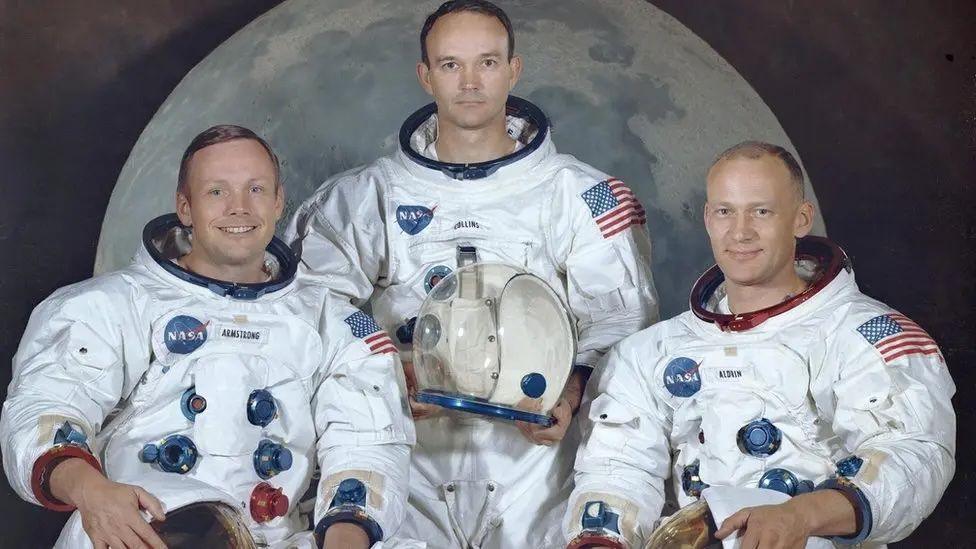
Buzz Aldrin, right, along with his crewmates Neil Armstrong and Michael Collins, before their mission to the Moon
On 21 July 1969, former fighter pilot Edwin "Buzz" Aldrin left his lunar landing craft and became the second person to step on the surface of the Moon. Almost 20 minutes beforehand, his commander, Neil Armstrong, had been the first.
Aldrin's first words were: "Beautiful view".
"Isn't that something?" asked Armstrong."Magnificent sight out here."
"Magnificent desolation," replied Aldrin.
The fact that he was second never sat comfortably with him. His crewmate Michael Collins said Aldrin "resented not being first on the Moon more than he appreciated being second".
But Aldrin was still proud of his achievement; many years later, when confronted by a man claiming Apollo 11 was an elaborate lie, the 72-year-old Aldrin punched him on the jaw.
And following Neil Armstrong's death in 2012, Aldrin said: "I know I am joined by many millions of others from around the world in mourning the passing of a true American hero and the best pilot I ever knew."
Despite struggles in later life, he never lost his thirst for adventure and joined expeditions to both the North and South Poles, the latter at the age of 86.
Allow X content?
This article contains content provided by X. We ask for your permission before anything is loaded, as they may be using cookies and other technologies. You may want to read X’s cookie policy, external and privacy policy, external before accepting. To view this content choose ‘accept and continue’.
While embracing his celebrity, he has remained an advocate for the space programme, especially the need to explore Mars.
"I don't think we should just go there and come back - we did that with Apollo," he says.
And his name has become known to new generations as the inspiration for Buzz Lightyear from the Toy Story series of films. In January 2023, at the age of 93, he married for a fourth time..
Charles Duke (Apollo 16)
There are only four people still alive who have walked on the Moon - Charlie Duke is one of them. He did it aged 36, making him the youngest person to set foot on the lunar surface.
In a later BBC interview, he spoke of a "spectacular terrain".
"The beauty of it… the sharp contrast between the blackness of space and the horizon of the Moon… I'll never forget it. It was so dramatic."
But he had already played another significant role in Nasa's exploration of the Moon. After Apollo 11 touched down in 1969, it was Duke - in mission control as the Capsule Communicator, or Capcom - who was waiting nervously on the other end of the line when Neil Armstrong said: "Houston, Tranquility Base here. The Eagle has landed."
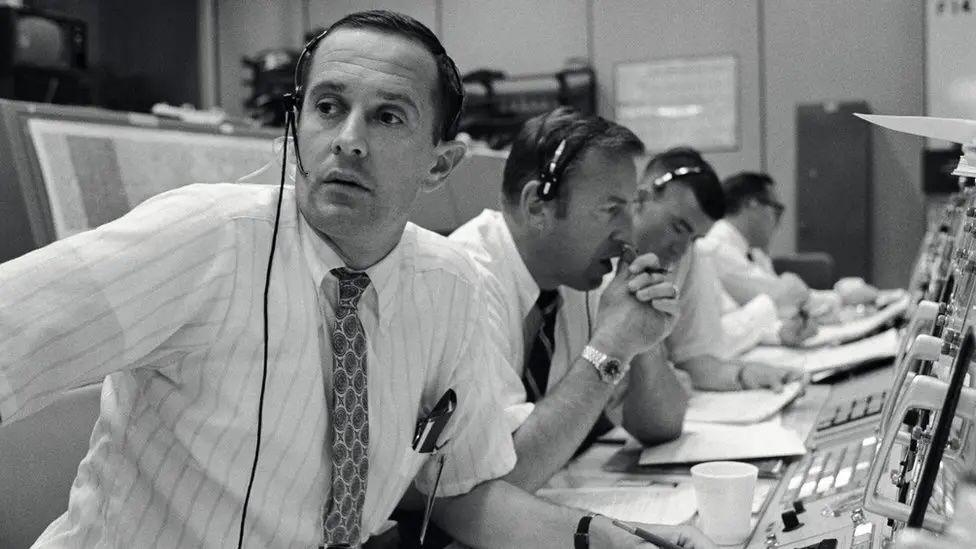
Charlie Duke, along with Jim Lovell and Fred Haise in Mission Control, during the Apollo 11 mission
In his distinctive southern drawl, Duke replied: "Roger, Tranquility. We copy you on the ground, you've got a bunch of guys about to turn blue, we're breathing again."
"I really meant it, I was holding my breath the last minute or so," he later told the BBC.
In 2022, Duke told the BBC he was excited about Nasa's Artemis mission - but warned that it wouldn't be easy for the new generation of astronauts.
"They've picked near the South Pole for the landing, because if there's any ice on the Moon, it would be down in that region. So that's gonna be difficult - because it's really rough down there. But we'll pull it off."
Charlie Duke now lives outside San Antonio, Texas, with Dorothy, to whom he has been married for 60 years.
Fred Haise
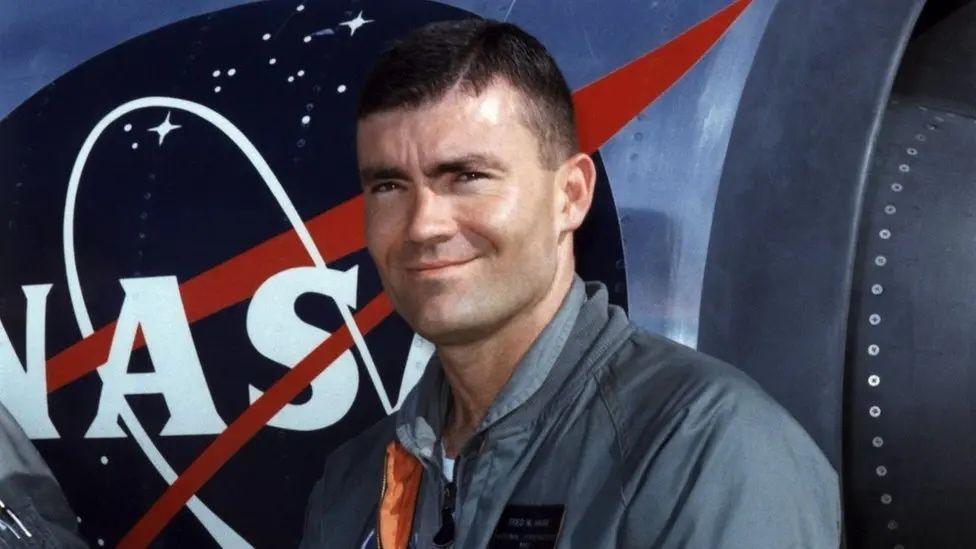
Fred Haise and his crewmates seemed surprised by their celebrity after they returned to Earth.
Fred Haise was part of the crew of Apollo 13 that narrowly avoided disaster in 1970 after an on-board explosion caused the mission to be aborted when the craft was more than 200,000 miles (321,000km) from Earth.
The whole world watched nervously as Nasa attempted to return the damaged spacecraft and its crew safely. Once back, Haise and his crewmates James Lovell and Jack Swigert became celebrities, to their apparent surprise.
"I feel like maybe I missed something while I was up there," he told talk show host Johnny Carson when the crew appeared on The Tonight Show.
Haise never made it to the Moon. Although scheduled to be commander of Apollo 19, that mission was cancelled because of budget cuts, as were all other flights after Apollo 17.
He later served as a test pilot on the prototype space shuttle, Enterprise.
Like many of his fellow Apollo alumni, after leaving Nasa, Haise continued to work in the aerospace industry until his retirement.
Harrison Schmitt (Apollo 17)
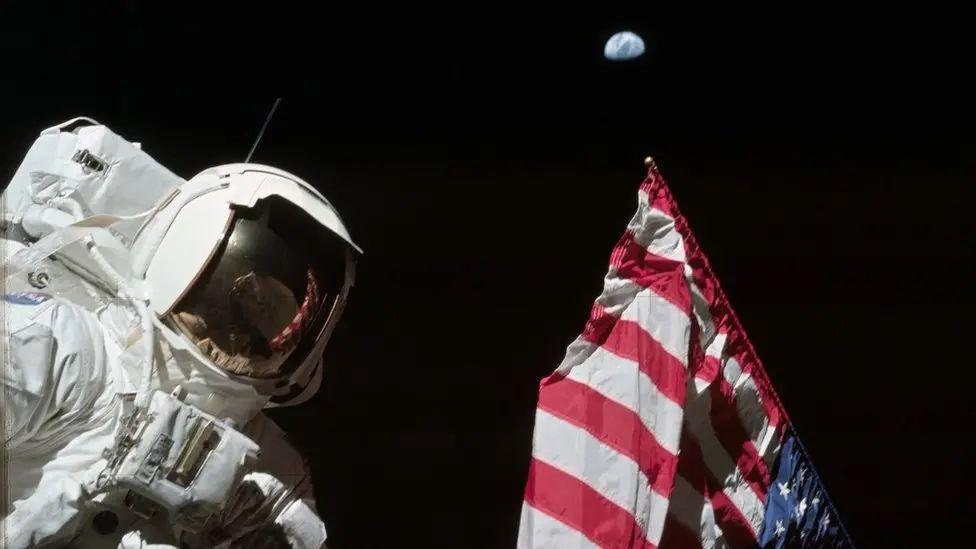
Harrison Schmitt was the first scientist to visit the Moon
Unlike most other astronauts of the time, Schmitt had not served as a pilot in the US forces.
A geologist and academic, he initially instructed Nasa astronauts on what to look for during their geological lunar field trips before becoming a scientist-astronaut himself in 1965.
Schmitt was part of the last crewed mission to the Moon, Apollo 17, and along with commander Eugene Cernan, one of the last two men to set foot on the lunar surface, in December 1972.
After leaving Nasa in 1975, he was elected to the US Senate from his home state of New Mexico, but only served one term. Since then he has worked as a consultant in various industries as well as continuing in academia.
He is also known for speaking out against the scientific consensus on climate change.
David Scott (Apollo 15)
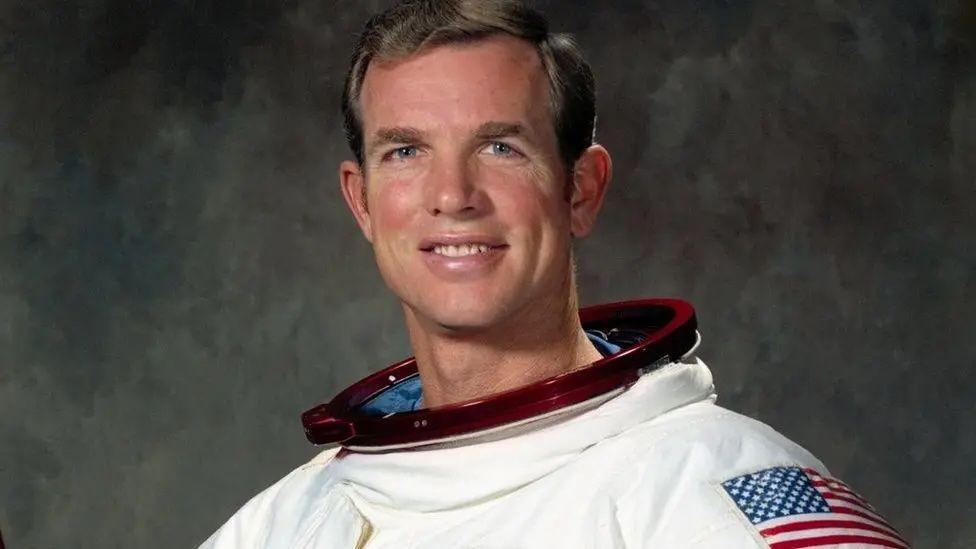
David Scott was the seventh person to walk on the Moon
David Scott, the commander of Apollo 15, is one of just four men alive who have walked on the Moon - but he was also one of the first to drive on it too.
In 1971, Scott and crewmate James Irwin tested out the Lunar Roving Vehicle (LRV), "Man's First Wheels on the Moon" as it was called. Travelling at speeds up to 8 mph (12 km/h) the LRV allowed astronauts to travel large distances from the lunar lander much quicker than they could walk.
"On a first mission you never know whether it's going to work," he later recalled. "The greatest thrill was to get it out, turn it on, and it actually worked."
After returning from the Moon, Scott worked in various management roles within Nasa, before joining the private sector.
He has also acted as consultant on several film and television projects, including Apollo 13 and the HBO miniseries From The Earth To The Moon.
What will the next generation of lunar adventurers accomplish?
- Published12 May 2019
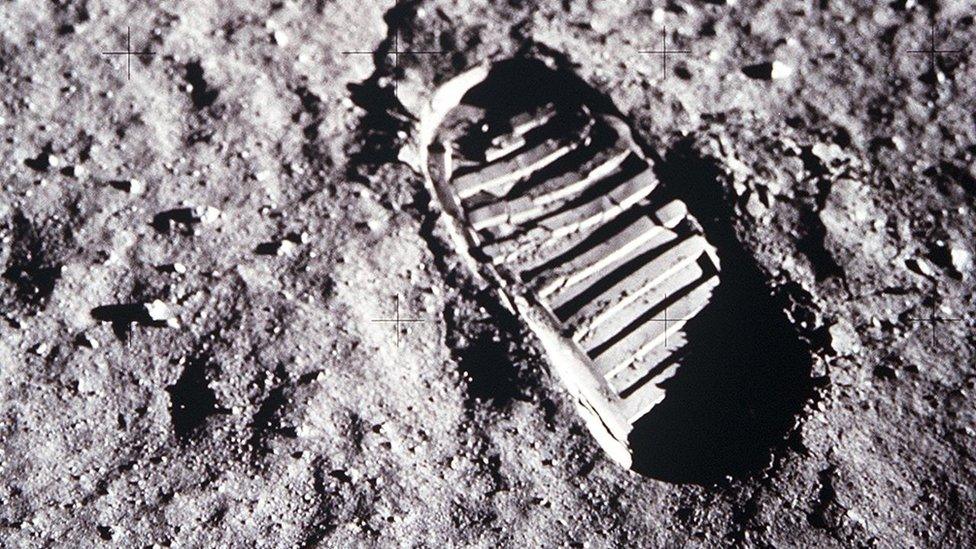
- Published9 August
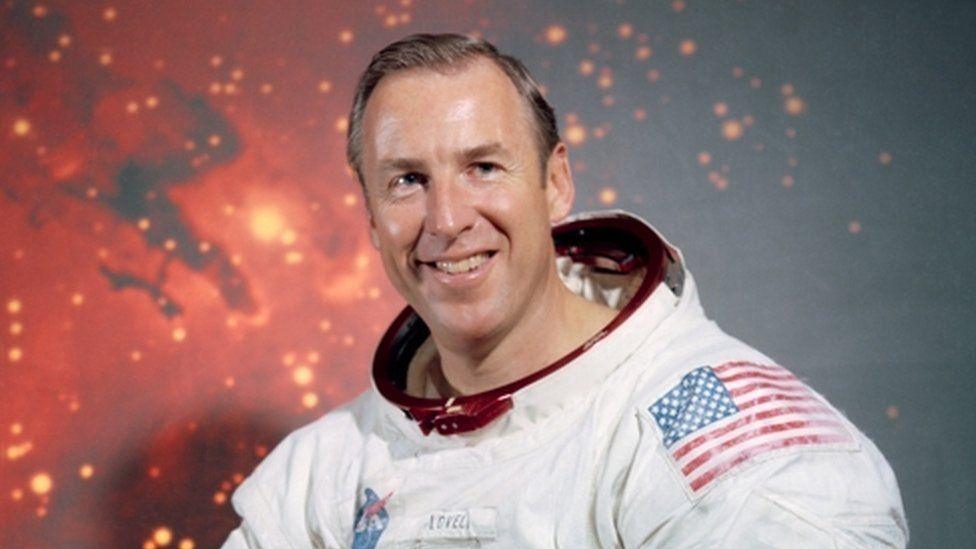
- Published8 June 2024
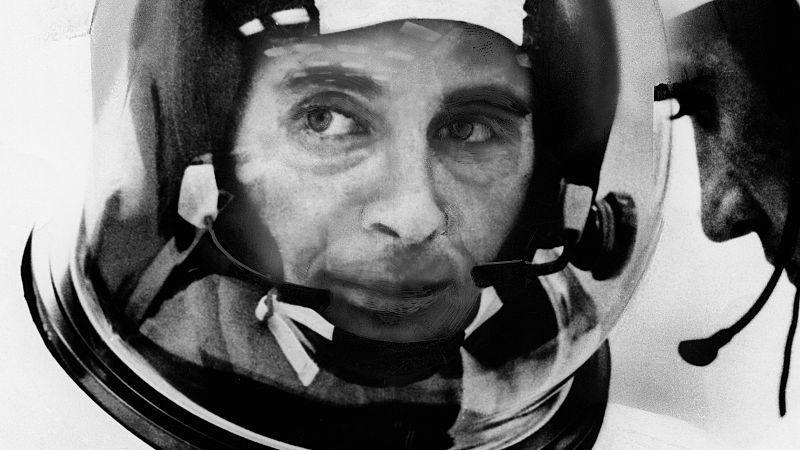
- Published3 April 2023
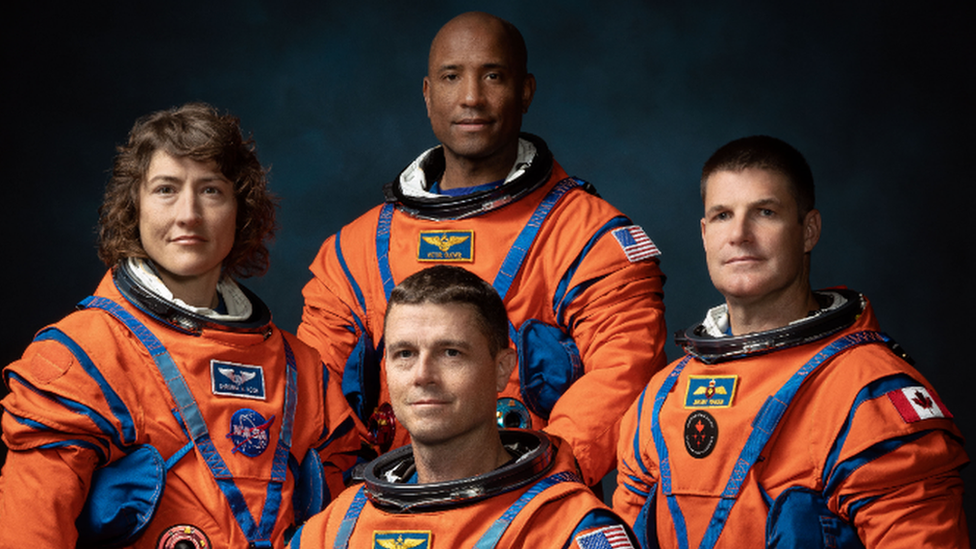
- Published22 August 2022
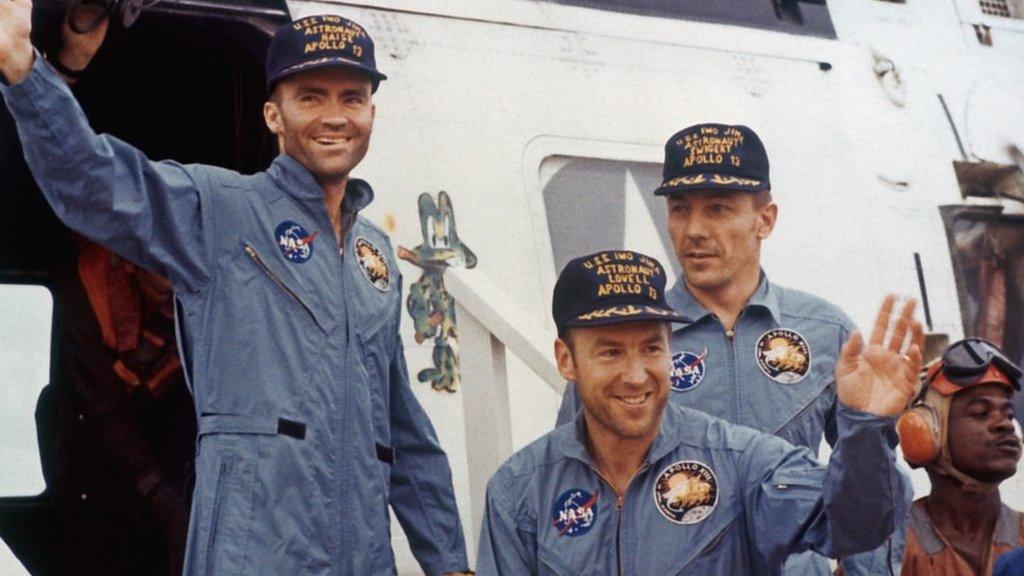
- Published10 November 2010
